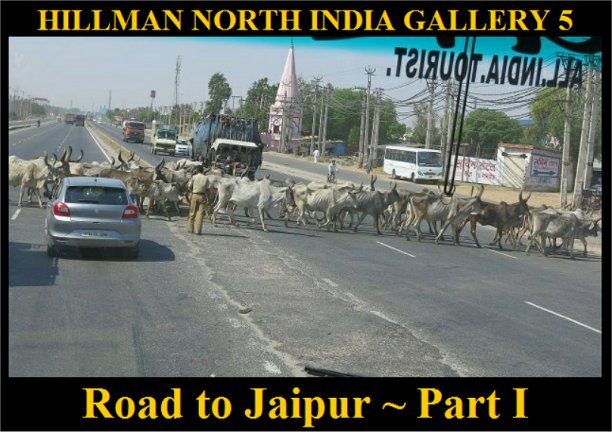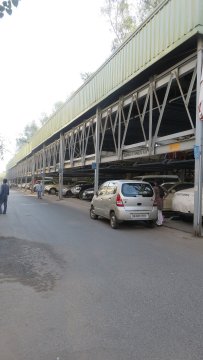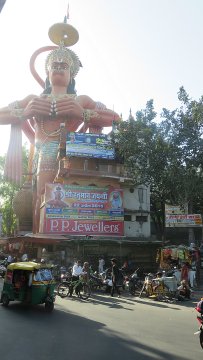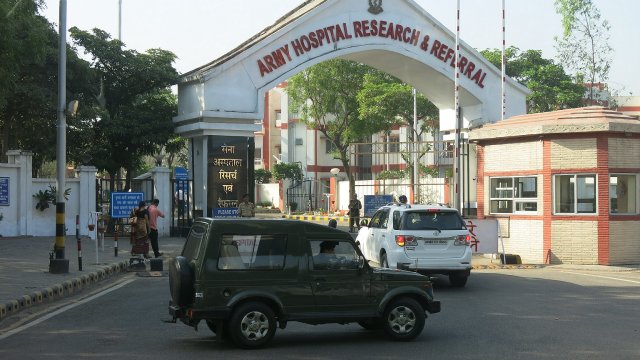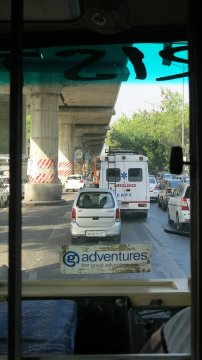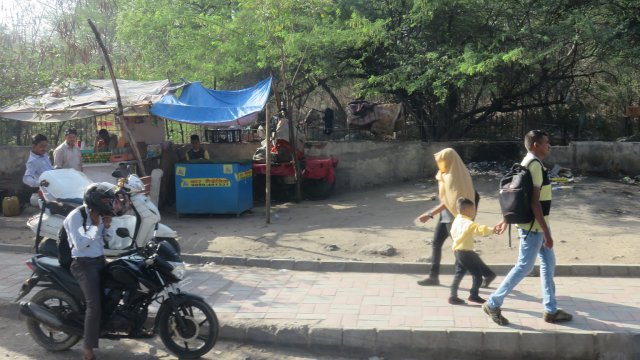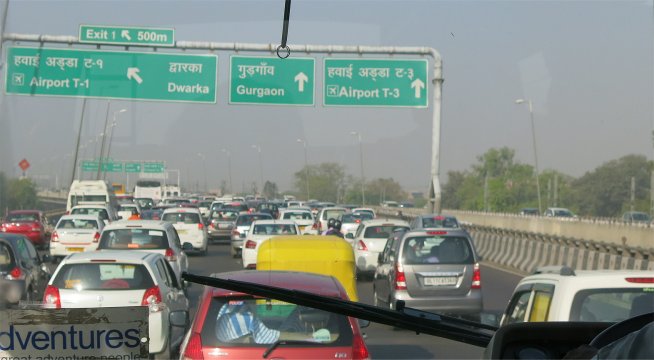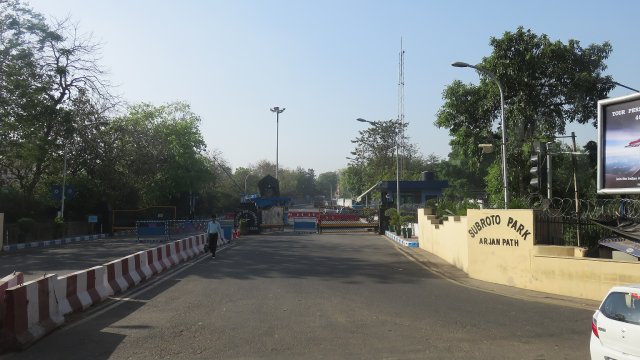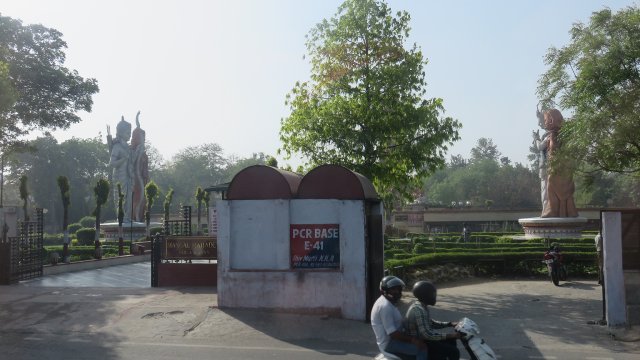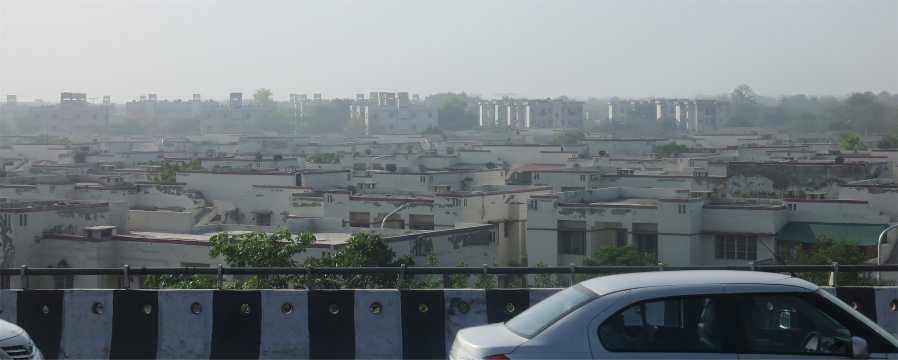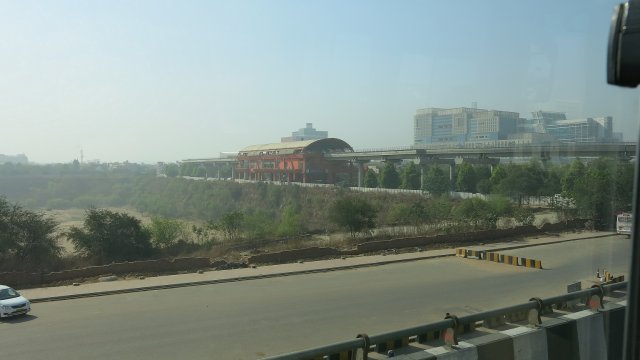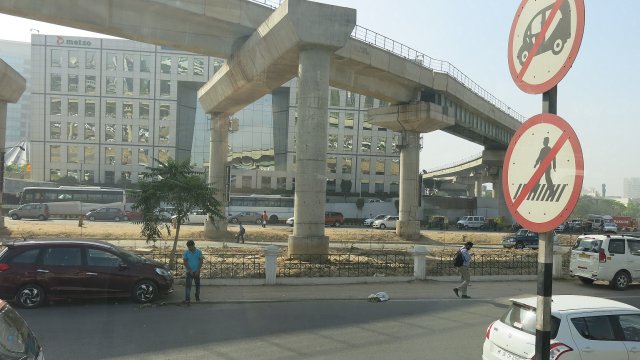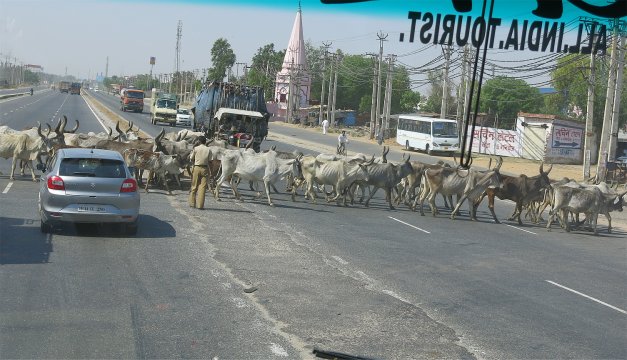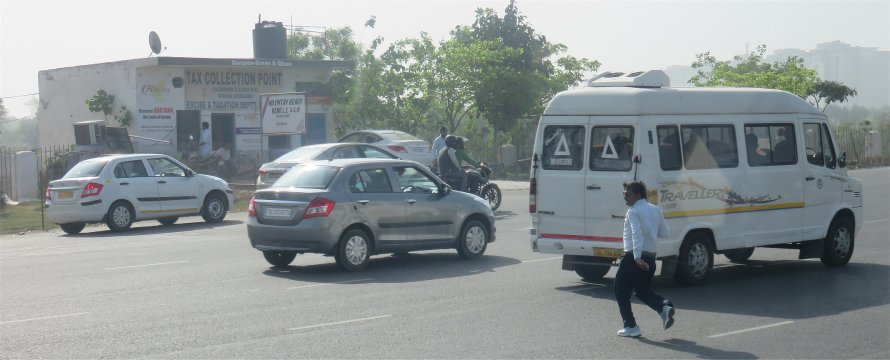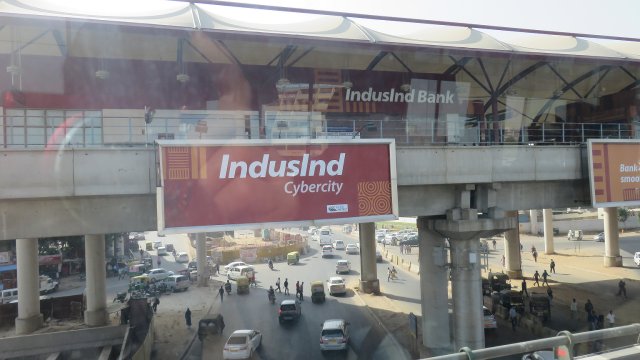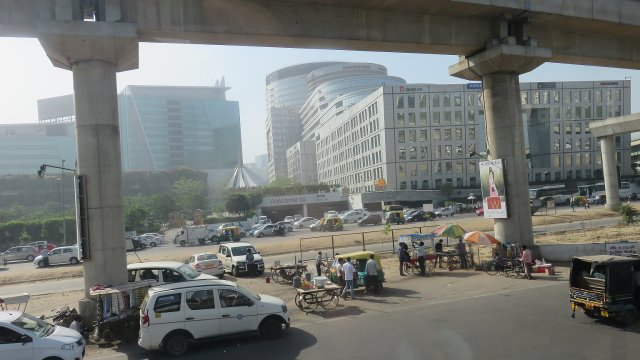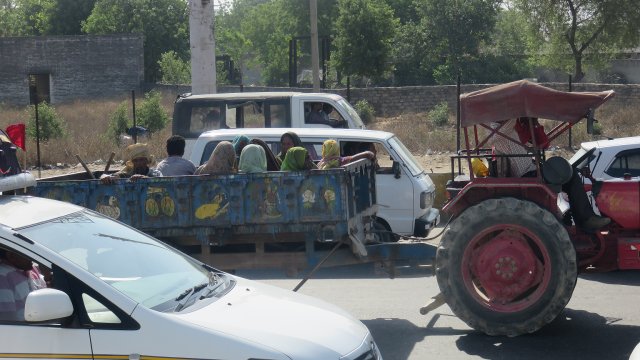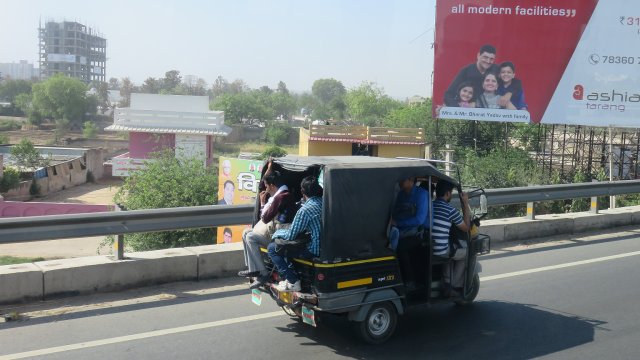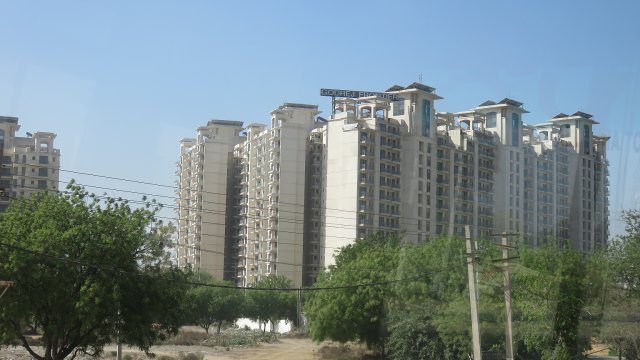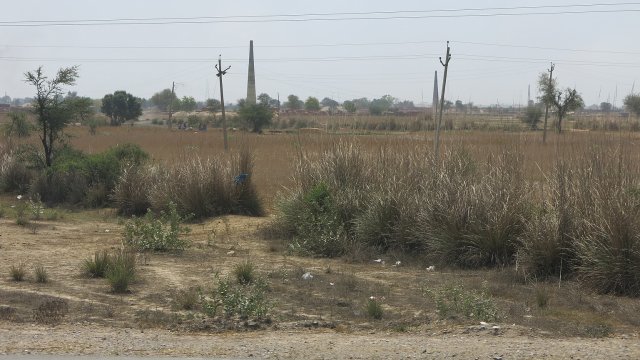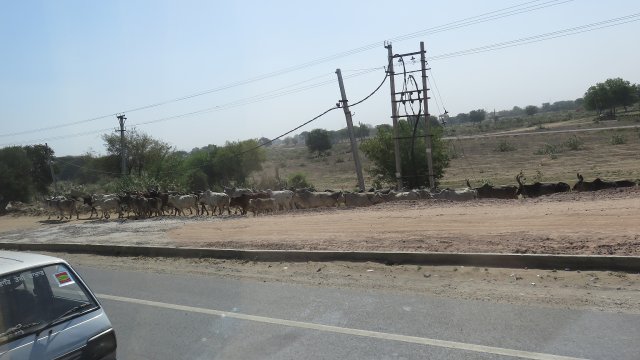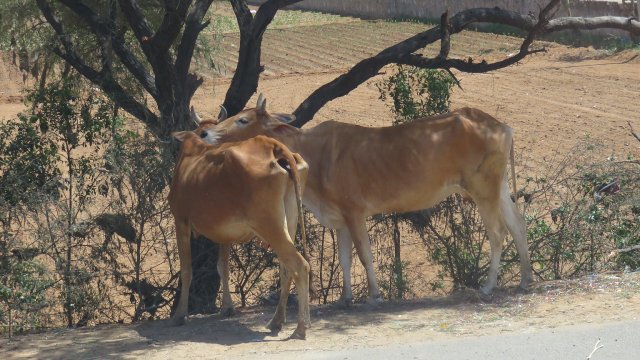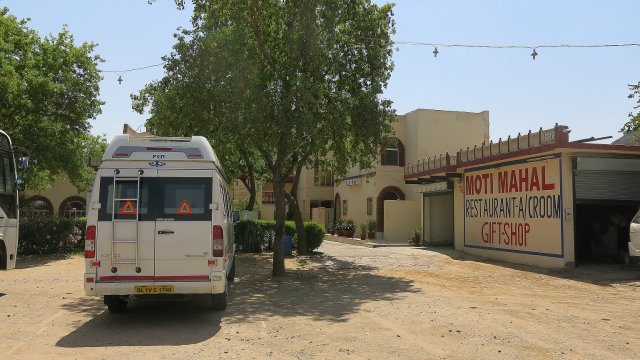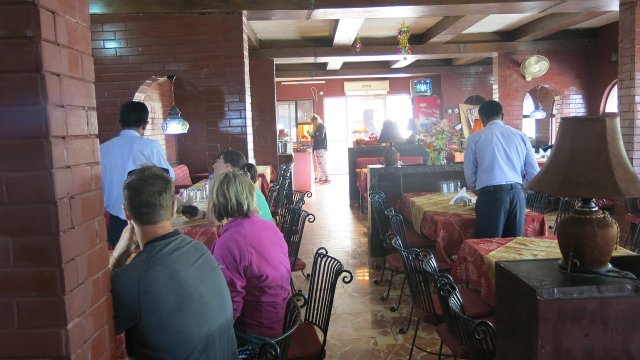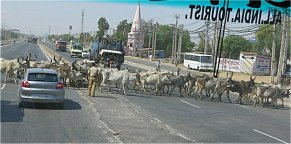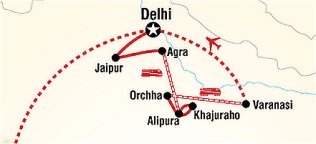April 12: After an early hotel breakfast we boarded
our bus for a 7-hour drive to Jaipur. The road to Jaipur was very good,
and our bus driver and his assistant are very capable. He honks his horn
whenever he wants to pass - considered a warning or courtesy to the vehicle
ahead. Indeed, most vehicles post signs on the rear requesting "Blow Horn."
The driver's assistant gives him hand signals when he is in a tight space
and he provides a second set of eyes to detect dangerous situations in
every direction.
It was a breath of fresh air, literally, once we got outside
of Delhi. The countryside is very dry, and the fields are harvested. They
are now waiting for the monsoons before planting again. Everything from
the crops is used -- the straw for the cows which provide milk and power
for transporting goods. Stubble is tied in bundles, used for fuel.
It was funny to see trucks with bulging bags -- huge bags, literally bursting
at the seams, filled with chopped hay for cattle.
Cow manure is gathered to be used as fertalizer and is
also made into patties, and dried in the sun to be used for fuel during
monsoon season and the winter. As we drove along, there were also house-shaped
blocks of cow manure, marked with an identification symbol, drying in the
sun. This would not be our favourite household chore... without gloves,
even... LOL! Cow dung and cow urine are also thought to be a disinfectant
and are sometimes used to clean up homes and are even used in in cosmetics.
In some ways, cows for Indians are like the pets in the Western Culture.
You don't see dog meat, cat meat or even horse meat in most Western countries
as these are the animals people have in their homes and with which people
share a special bonding.
There are cows everywhere. The ones wandering the streets
and roads are ones that no longer provide milk. They are left to wander
but people bring fresh alfalfa to feed them every day. CEO explained the
Hindu reverence for cows: Hindus donít worship cows, rather they respect,
honour and adore the cow. By honouring this gentle animal, who gives more
than she takes, they honour all creatures. Hindus regard all living creatures
as sacred Ė mammals, fishes, birds, et al. They display this reverence
for life in their special affection for the cow. At festivals they decorate
and honour her, but they do not worship her in the sense that they worship
the deities.
To the Hindu, the cow symbolizes all other creatures.
The cow is a symbol of the Earth, the nourisher, the ever-giving, undemanding
provider. The cow represents life and the sustenance of life. The cow is
so generous, taking nothing but water, grass and grain. The cow is so vital
to life, the virtual sustainer of life, for many humans. Veneration of
the cow instils in Hindus the virtues of gentleness, receptivity and connectedness
with nature. There are about 45,150,000 cows in India, the highest
in the world. So while some old and infirm cows given special care, the
rest are generally abandoned at public places such as railway stations
and bazaars where they can find food at garbage bins and dumpsters.
In some regions, especially Nepal and most states of India, the slaughter
of cattle is prohibited and their meat may be taboo. Because cow slaughtering
is only legal in two Indian states, cows must be transported around the
country in rather poor conditions, usually train or by foot.
The reverence for the cow played a role in the Indian
Rebellion of 1857 against the British East India Company. Hindu and Muslim
sepoys in the army of the East India Company came to believe that their
paper cartridges, which held a measured amount of gunpowder, were greased
with cow and pig fat. The consumption of swine is forbidden in Islam. Because
loading the gun required biting off the end of the paper cartridge, they
concluded that the British were forcing them to break edicts of their religion.
Historically, many communal riots between Hindus and Muslims were attributable
directly to cow slaughter.
